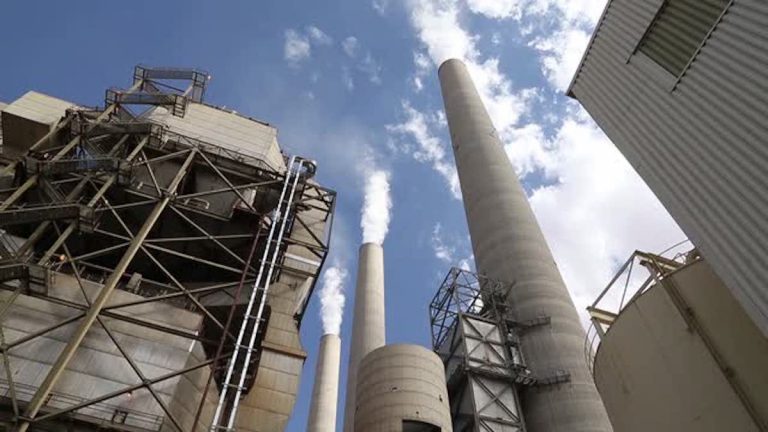Since early on in his administration, President Trump and his Secretary of Energy, Rick Perry, have been stubbornly attempting to provide an effective bailout for (mostly) coal-fired power plants that are scheduled to shut down around the nation. Secretary Perry’s various attempts to accomplish this via the rule-making process have twice been rebuffed by his own department’s agencies, so the administration has shifted tactics to invoke national security authorities in order to get its way.
The reasoning for this bailout is that the number of closing power plants in the U.S. threatens the stability of the nation’s grid. However, even the Department of Energy’s Federal Energy Regulatory Council (FERC) has stated that the grid would be fine if the current plant retirements go through.
Surely a large reason for the administration’s persistence is to meet Trump’s campaign promises to Appalachian coal country. But most of the coal plants that are shutting down are more than forty years old, and simply cost more to maintain and operate than they are worth. Trump is attempting to preserve the primacy of an industry which already has its best days well behind it.
That’s not to downplay the effects of the Obama administration’s EPA on the coal energy market. They waged a concerted effort to curtail the industry at every level—making it more expensive to mine coal, dispose of the waste generated in its mining and use, and burn it for power. These regulations were calculated to deal a major blow to coal as a power source, not only forcing older plants to shut down, but also making it prohibitively expensive to build newer, lower-emission plants. These regulations aimed far beyond merely reducing emissions; rather, they appeared targeted at the destruction of the coal industry as a whole.
Despite the damage caused by this “war on coal,” any attempted revival of coal as America’s energy king has run into bigger problems: competition.
A cheaper competitor now dominates the energy field in the form of mass exploitation of natural gas resources via hydraulic fracturing (which the EPA also desperately tried to curtail, but largely failed). Debates on whether natural gas energy is a net improvement over coal notwithstanding, the widespread availability of US-produced natural gas, the relative ease of extracting it, and the tremendous size of the reserves available have made it too cheap and easy-to-access to overcome.
It’s important to note that the Trump bailout calls for stalling the shutdown of a number of old nuclear plants as well. The problem here is once again government interference: the nation’s oldest nuclear plants are vastly inferior to (and less safe than) modern reactor technology, but regulatory barriers, combined with an irrational but visceral public fear of nuclear power, make building new plants incredibly difficult and cost-prohibitive.
Once again, delaying the shutdown of inefficient old plants is not addressing the problem.
Rather than attempting to further calcify the hyper-subsidized and -regulated energy market, the federal government should help enable a more competitive market for energy solutions, one in which renewable, nuclear, coal, and gas energy could seek a natural equilibrium. In rejecting the need for and the efficacy of a bailout of the closing plants, FERC acknowledged that electric utilities can’t react to prices in the same way as regular markets “in part because their regulatory institutions don’t allow them to do so.”
Nevertheless, earlier this year Secretary of Energy Rick Perry mused, “I don’t think we want a free market in electricity.” He continued with a curious false equivalency, “Do we want a free market for the military? No!”
Naturally, the idea of our power grid as a national security good is what may provide the administration with the tools it needs to go ahead and bail out the closing plants. A leaked memo revealed the administration is considering forcing plants to stay open using an emergency authority within the National Power Act that was intended to help stabilize the grid during major national emergencies—war, cyber attack, or natural disaster. In addition, the memo recommended invoking the Defense Production Act of 1950, a law which grants the president unbelievably broad powers to commandeer whole sectors of the economy for purposes of “national defense.”
The power crisis revealed here has nothing to do with the electrical grid. Just as the Obama administration was able to use the EPA to devastate the coal industry, so now the Trump administration is invoking insanely broad emergency authorities in an attempt to resuscitate it. The ultimate onus lies with Congress for giving away these broad economic authorities to the executive in the first place. These capricious swings in executive policies towards energy have lasting implications for the cost of electricity and the long-term durability of the grid for all Americans.
The use of national security emergency policies is alarming. The Defense Production Act in particular amounts to a wide-open gap in our system of checks and balances that allows the president to commandeer production in huge portions of the economy. Using this extraordinary law to address an issue that even federal regulatory agencies have agreed is not an emergency would constitute a grave abuse of authority that must not be allowed to occur unchecked.














Add comment